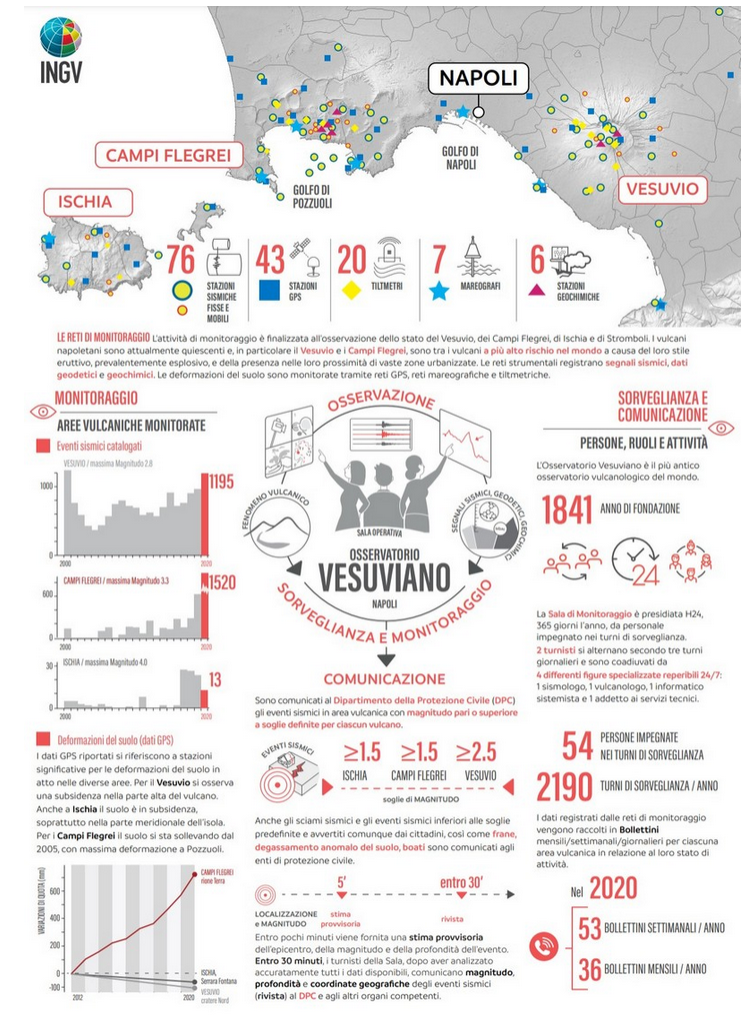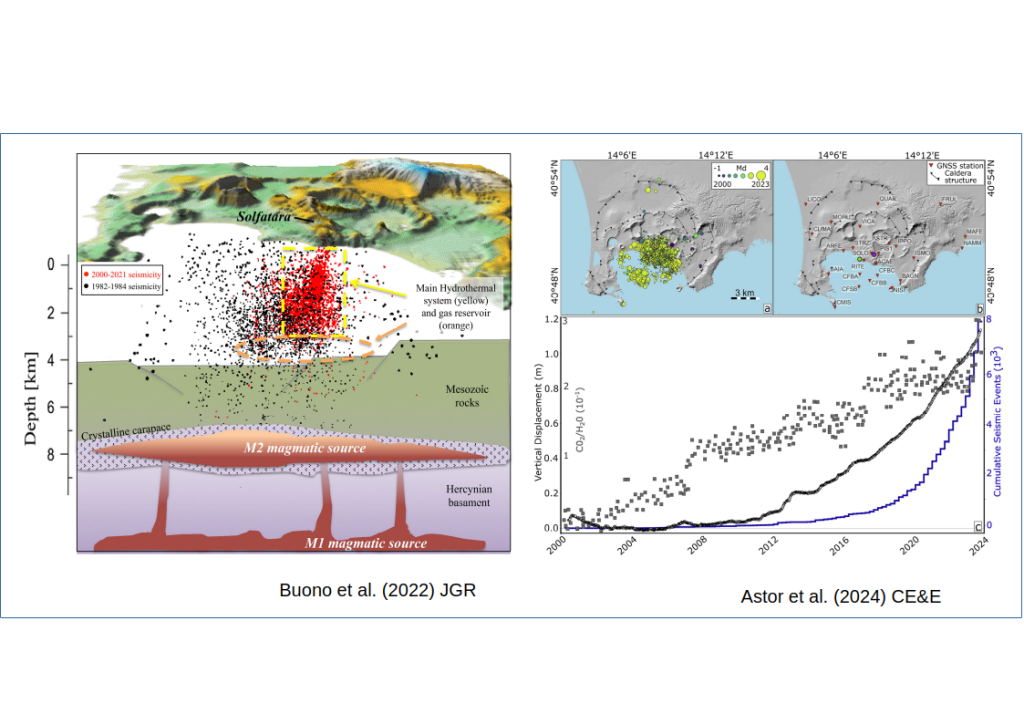
Campi Flegrei
Campi Flegrei (Phlegraean Fields) is a large, active volcanic caldera located west of Naples, Italy. It is part of the Campanian Volcanic Province, which includes Vesuvius and Ischia. The caldera spans ~12–15 km in diameter and is characterized by complex volcanic and hydrothermal activity. The caldera contains more than 24 eruptive centers, including tuff rings, tuff cones, lava domes, and maars.
Campi Flegrei is in a state of volcanic unrest, with continuous monitoring by the Istituto Nazionale di Geofisica e Vulcanologia (INGV).
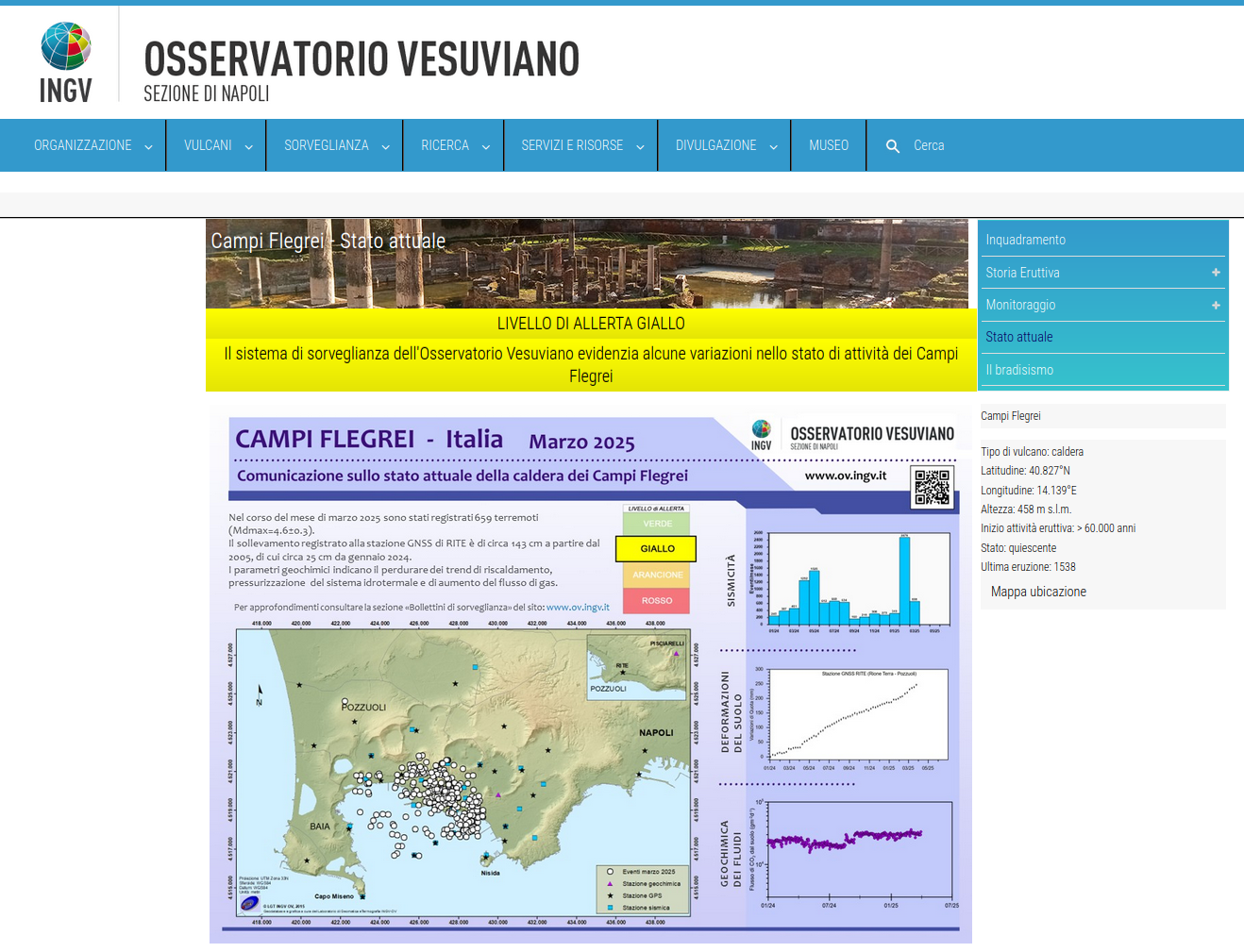
Campi Flegrei simulations

The simulations of Campi Flegrei are set up in the frame of the bulk of geophysical, geochemical, petrological and volcanological knowledge.
The shape of the magmatic system, along with the composition of magmas is chosen accordingly.
Volatile-poor phonolite fills the upper chamber, while volatile-rich shoshonite replenishes the lower chamber and dike.
Changing the amount of volatiles in the upper chamber, representing different degrees of degassing, several density differences between the two end-memebers are considered.
Furthermore, the occurrence of an overpressurized dike rising from depth and intersecting the upper chamber is accounted for, by setting different values of overpressure in the lower part of the magmatic system.
Summing up, simulated cases span from a pure buoyant case with no overpressure, to pure overpressurized cases where magma in the upper chamber is lighter than that in the lower chamber, and also to various intermediare cases owing both buoyant density differences and overpressure.

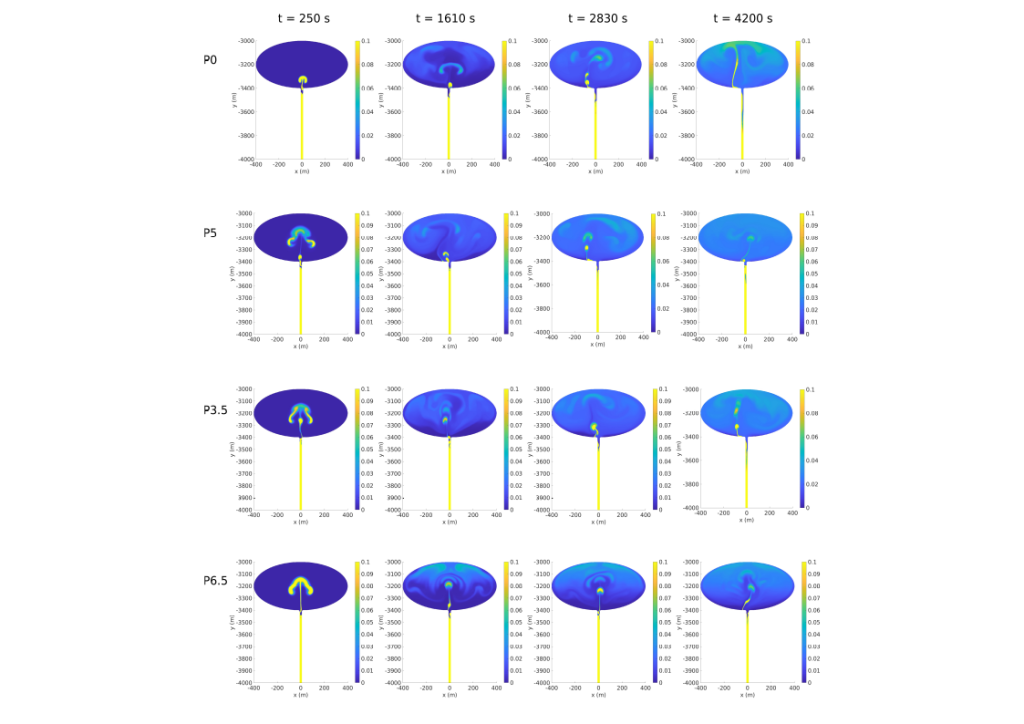
Buoyant simulations are P0, P3.5, P5 and P6.5.
P0 is the pure buoyant case.
P3.5, P5 and P6.5 have different degrees of buoyancy and overpressure strengths.
Plumes of the lower lighter shoshonite invade the shallow chamber with a momentum increasing with density difference.
N5, N10, and N15 have increasing overpressure, but a stable gravitational stratification.
The lower denser magma forms a gravity current spreading along the bottom of the shallow reservoir.

Continuous replenishment of light magma into the shallow chamber and exiting of heavy mass causes a progressive magmastatic pressure decrease in the upper reservoir. A process that persists over the long term.
The initial release of overpressure from the lower part of the magmatic system causes a sudden increase of pressure in the shallow chamber along with a decrease in the deep reservoir. Such evolution lasts only for the first 100-200 s. This is a short term process.
The sole long term trend in pressure is present in P0 case.
The only short term behaviour is present in the purely overpressurized cases N5, N10 and N15.
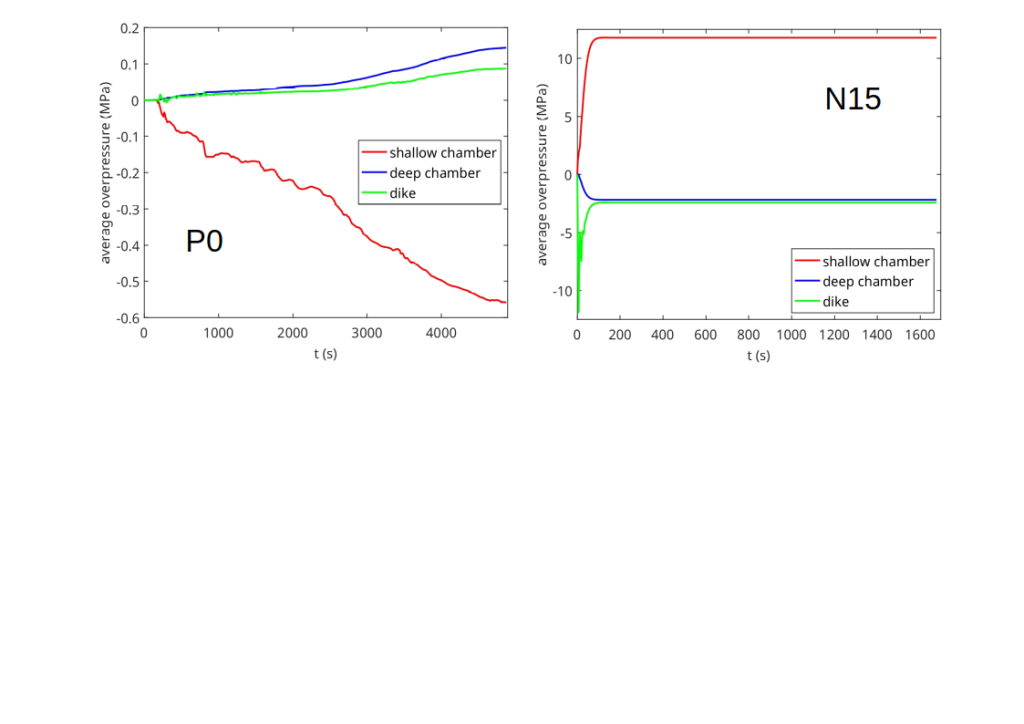
In the hybrid cases P3.5, P5 and P6.5 the two trends are superimposed.
On the short term there is the increase/decrease of pressure in the shallow/deep chambers, and on the long term there is the progressive decrese/increase of magmastatic pressure component in the shallow/deep reservoirs.
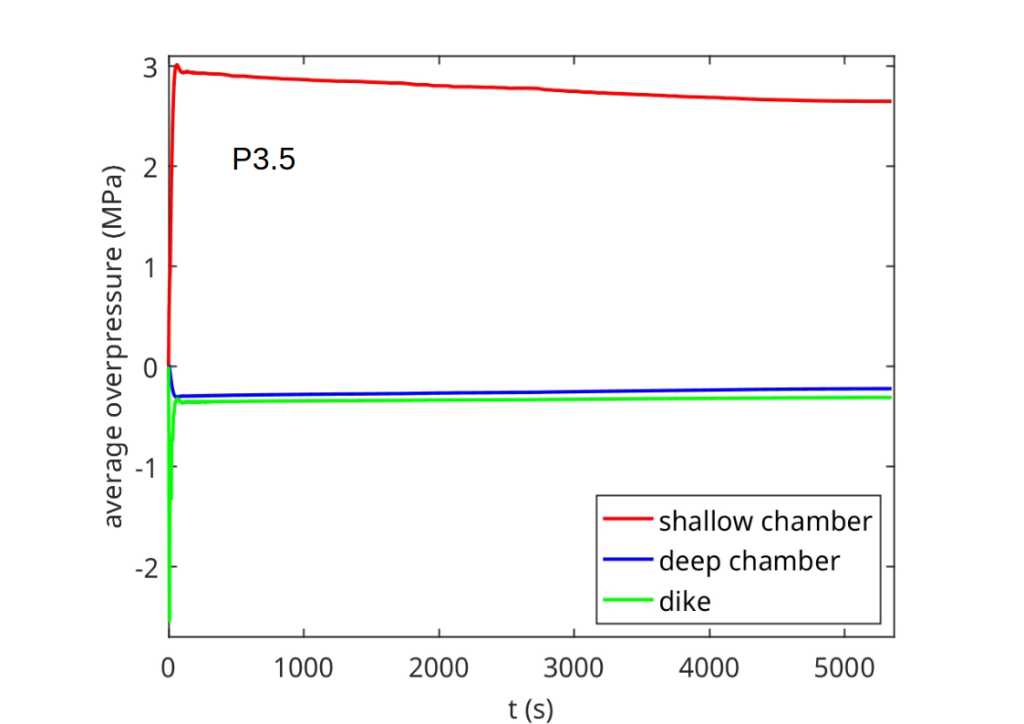
Further work on quasi-static deformations associated to previous dynamics is under development.

Proudly powered by WordPress

